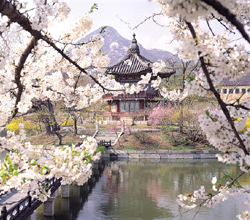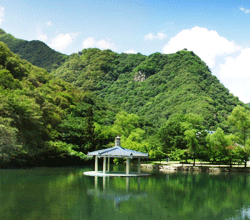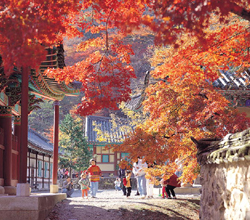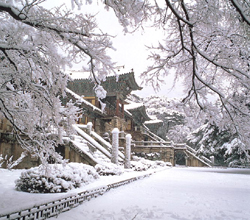|
|
|
 Post Date : 10-06-10 17:49
Post Date : 10-06-10 17:49
|
Post by :
superman
Hit : 3,559
|
Overview
Korea has four seasons, with a wet monsoon/summer season in the middle of the year, and a cold winter from November to March.
The island of Jeju off the southern coast is the warmest and wettest place in the country. The ideal time to visit Korea is during the autumn months (September-November).
During this time, the country experiences warm, sunny weather, skies that are cobalt blue and spectacular foliage that is perhaps the biggest draw.
Winters are cold and dry and are a good time to visit if you are interested in winter sports as there are numerous ski resorts.
Spring (April-May) is also beautiful with all the cherry blossoms in bloom. However, it is very busy and one needs to book in advance to ensure accommodation is available.
The summer months are muggy and hot, and rather crowded. It is also when the monsoon season begins so many activities are subject to the fluctuations of heavy rain.
Four Distinct Seasons
Korea's climate is regarded as a continental climate from a temperate standpoint and a monsoonal climate from a precipitation standpoint.
The climate of Korea is characterized by four distinct seasons: spring, summer, fall, and winter.
- Spring

Spring lasts from late March to early May.
Temperatures are mild and pleasant.
It is the ideal season to witness cherry blossoms, forsythia, azaleas, magnolias and lilacs blooming during the peak season between March and May.
- Summer

The hot months of summer last from June to early September.
Half of the annual rainfall occurs during the monsoon season from late June to early July.
Mid-July through mid-August is the hottest period and the most popular time for Koreans to go on vacation.
- Autumn

Lasting from September through November, the mild days of fall make it the most pleasant time of the year.
The temperature varies greatly from day to night.
The mountains, when blanketed with vivid golden and red autumnal leaves under the clear blue sky, are breathtaking.
- Winter

Winter lasts from December to mid-March.
It can be bitterly cold during this time due to the influx of cold Siberian air.
Heavy snow in the northern and eastern parts of Korea makes for favorable skiing conditions.
|
|
|
|

